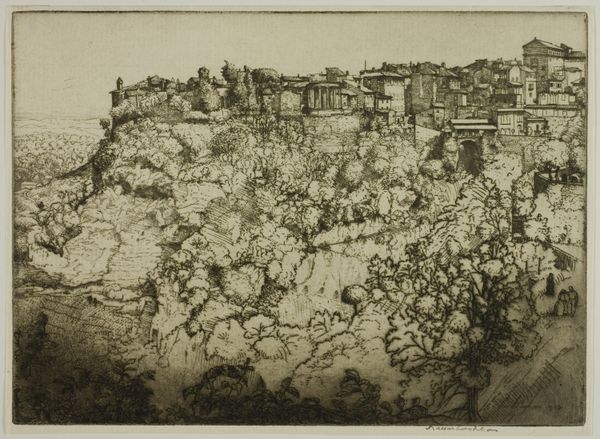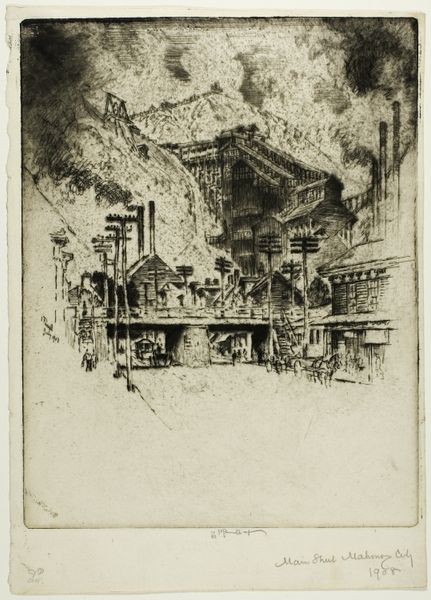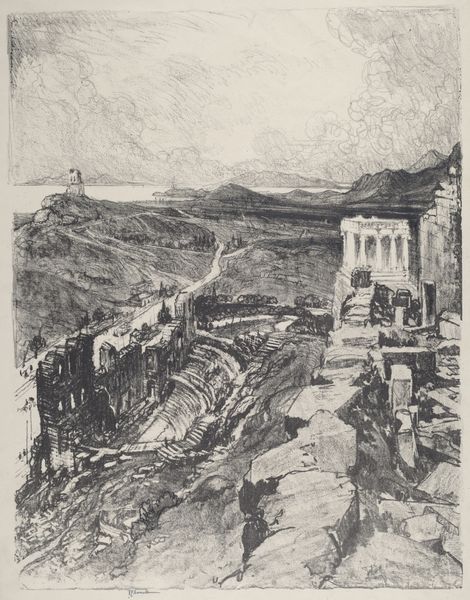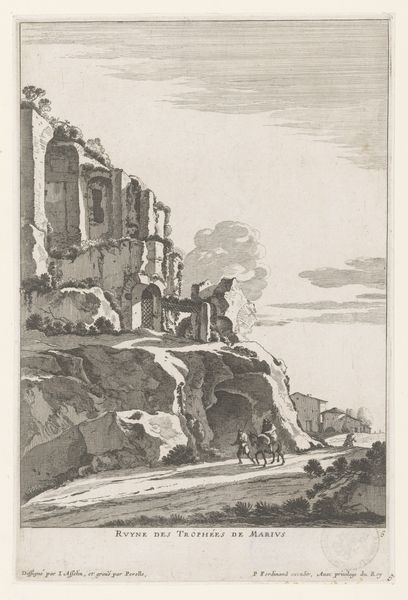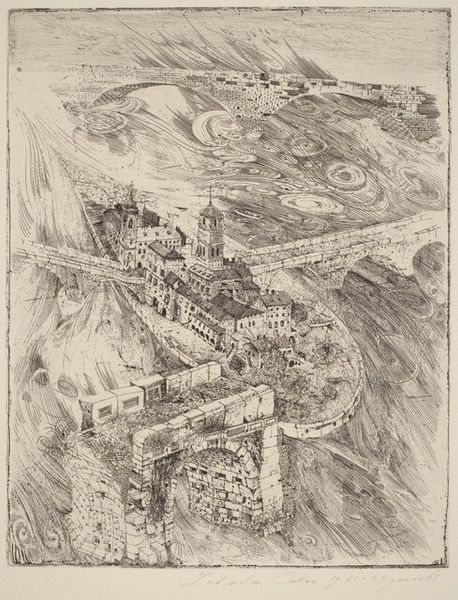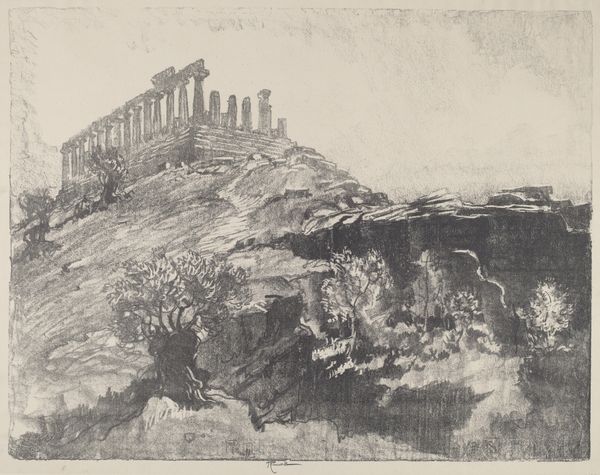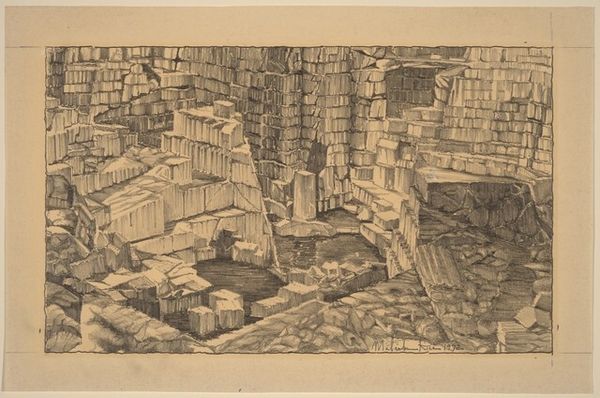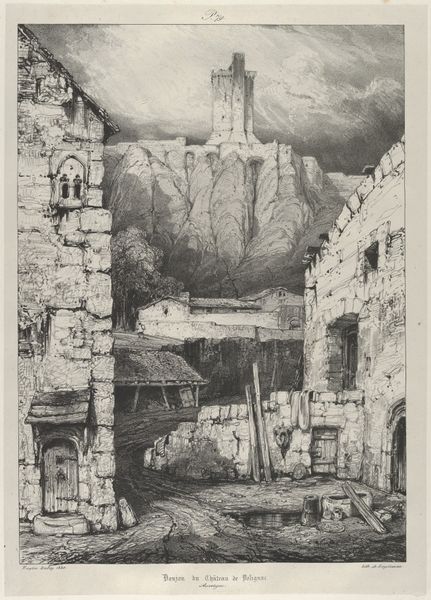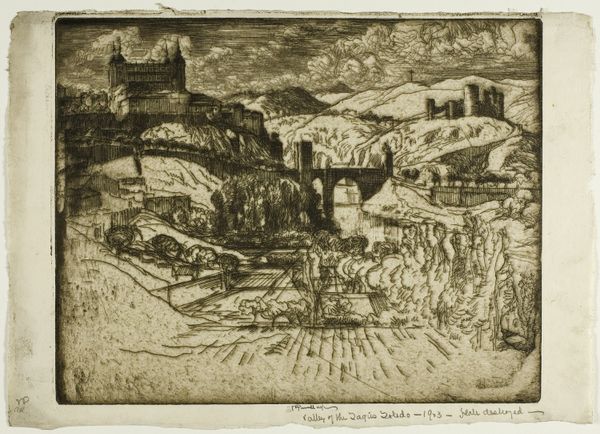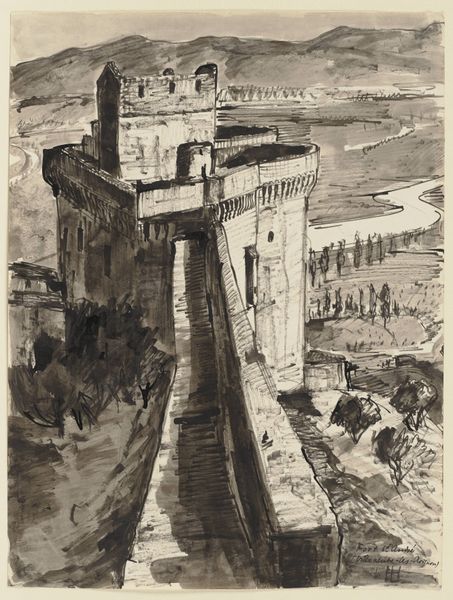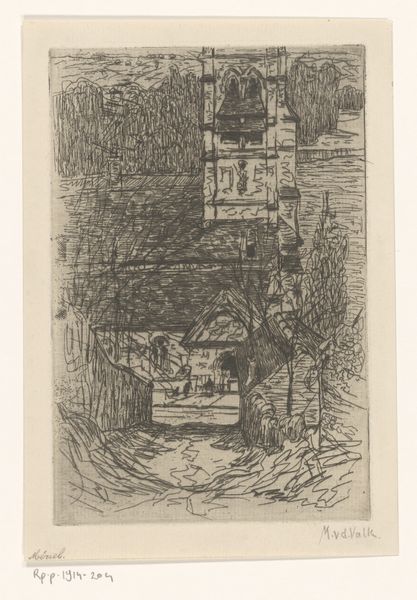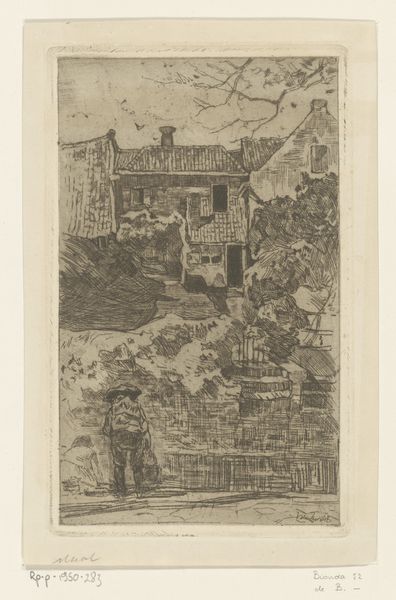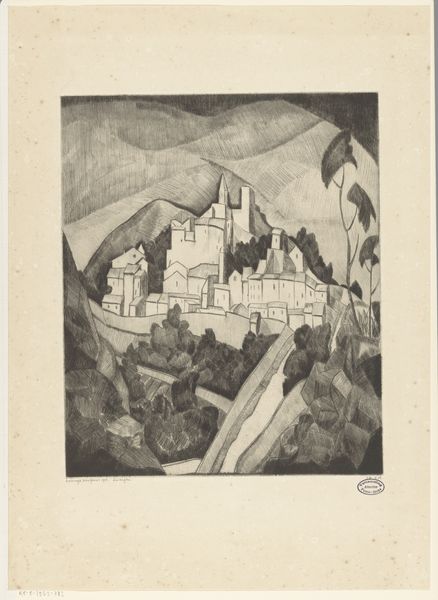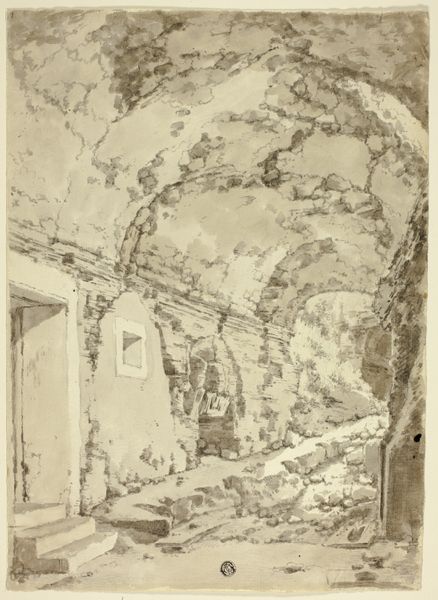
Dimensions: 278 × 214 mm (image); 335 × 237 mm (sheet)
Copyright: Public Domain
Curator: Joseph Pennell created "Palisades and Palaces" in 1908. It's an etching on paper currently residing here at the Art Institute. Editor: Immediately striking! The industrial scene viewed from atop what seems like a raw quarry, an imposing scale amplified by the hazy etching technique. It evokes a sense of vast production, and the materials… the tangible grit of the process really speaks. Curator: Indeed. Pennell, a prominent figure in the etching revival, often depicted industrial landscapes, drawn to the dynamism of modern life. There is a sociopolitical element at play; he frequently aimed to portray industry as aesthetically powerful and almost sublime. Editor: Sublime is a loaded word here, but it makes me consider the logistics, you know? Etching these fine lines…the acid, the plate…it all required specific skills. These kinds of technical practices aren’t emphasized as much, it is all physical, all handcraft. Curator: Absolutely, the etching process itself reflects the era's technological advancements. But think about what the etching is showing. These docks likely fueled significant trade. New York transformed drastically in that period, politically shifting boundaries. This work served, intentionally or not, to create something majestic about an incredibly chaotic part of that political and material movement. Editor: So it elevates the laborer’s work. Yet their literal hand is unseen. Consider how Pennell represents those docks; there are no figures, no makers represented on this printing. Are we looking at the real representation, then, if we lack figures and people in the industrial processes? Curator: Perhaps he saw the grandeur in the collective endeavor, beyond the individual toil. Certainly, the art world around Pennell wanted to embrace that optimistic spirit of that time and it can feel like these works tried to visually validate progress and national identity in a new century. Editor: Fair point. That interplay between industry and art persists today in different mediums and different social movements. It leaves me with the lasting impression that art has to confront industry with new material languages, whether physically etching metal, or something totally new. Curator: Exactly, an echo through time – Pennell’s view allows us to examine not only the process but the socio-political contexts of an age fascinated and transformed by technological prowess.
Comments
No comments
Be the first to comment and join the conversation on the ultimate creative platform.
